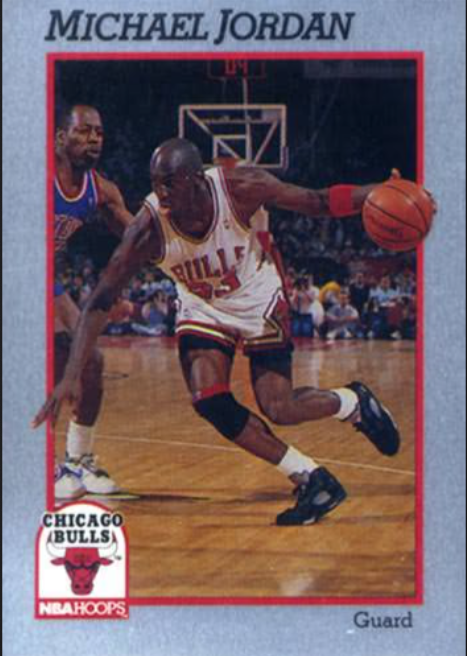The 1991 Hoops Metal Prototypes emerged as a daring and innovative experiment in the realm of basketball trading cards. Featuring the legendary Michael Jordan, these unique cards fused the thrill of sports collectibles with the audacious use of metal in their production. This article sheds light on the production process and the captivating narrative behind these distinctive cards, providing insights into the evolution from concept to reality.
At the forefront were the 1991 Michael Jordan Hoops Prototype Trading Card, the 1991 Michael Jordan Hoops Prototype Metal Trading Card, and the 1991 Michael Jordan Hoops Prototype Missing the Prototype Mark Trading Card. These cards not only showcased the brilliance of Jordan but also represented a revolutionary approach to card creation.
The inception of the Hoops Metal Prototypes involved a visionary marketing collaboration with a common household product manufacturer – bread. The goal was to penetrate new markets and incentivize consumers through a symbiotic relationship between Hoops and the bread producer. This strategic alliance echoed Michael Jordan’s later partnerships with Upper Deck and Hanes, where exclusive cards were bundled with specific product purchases.
In a similar vein, Hoops aimed to distribute these special metal cards through a bread producer partnership inspired by Franz bread’s promotional cards for the Portland Trail Blazers. Although Michael Jordan was not directly featured, his shadow loomed over cards like the 1991-92 Terry Porter and the 1991-92 Jerome Kersey, adding an aura of mystique to the collection.
The production process for these metal trading cards was nothing short of groundbreaking. It involved meticulous selection of metal materials, designing cards for durability and safety, and pioneering a printing technique that could adhere to metal surfaces without compromising image quality. An insider account from the production team offers a glimpse into the challenges and triumphs faced while bringing these cards to fruition.
Amidst the initial excitement, unforeseen risks surfaced when working with metal. The sharp edges of the cards posed a potential hazard to collectors, particularly younger enthusiasts, necessitating additional measures to smoothen edges and ensure safe handling. Distribution strategies extended beyond the bread producer partnership to include redemption cards in Hoops product packs, allowing fortunate buyers to exchange them for the sought-after metal cards.
Despite innovative approaches, the Hoops Metal Prototypes encountered hurdles such as production expenses and safety issues, limiting their widespread availability and making them rare finds highly coveted by collectors today. The legacy of these 1991 prototypes transcends their marketing origins, standing as a testament to the era’s bold and imaginative strategies in the trading card landscape.
In a realm where innovation meets risk, the 1991 Hoops Metal Prototypes transcend mere collectibles to embody a narrative of audacity, experimentation, and the relentless pursuit of the extraordinary. These cards remain as enduring symbols of a daring venture that pushed the boundaries of traditional trading card production, leaving an indelible mark on the world of sports memorabilia.

